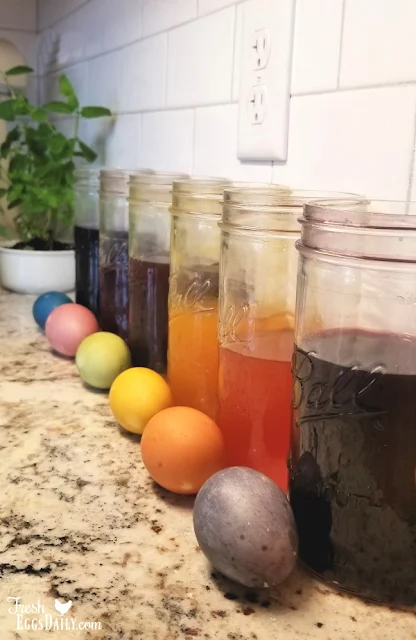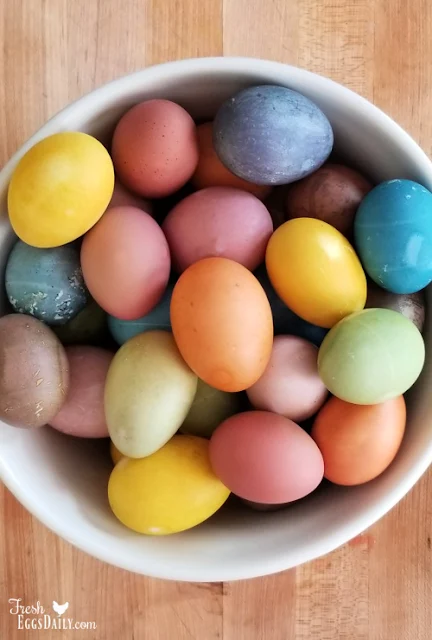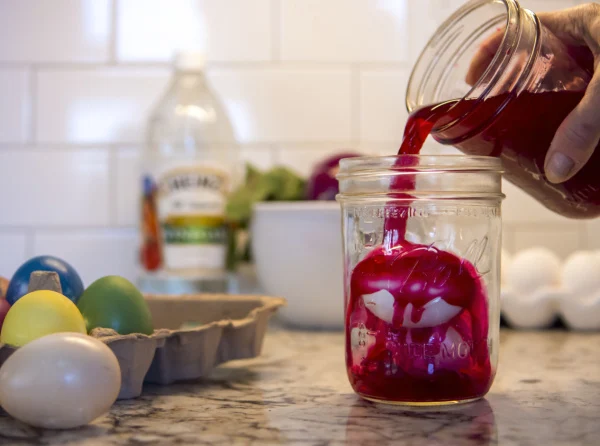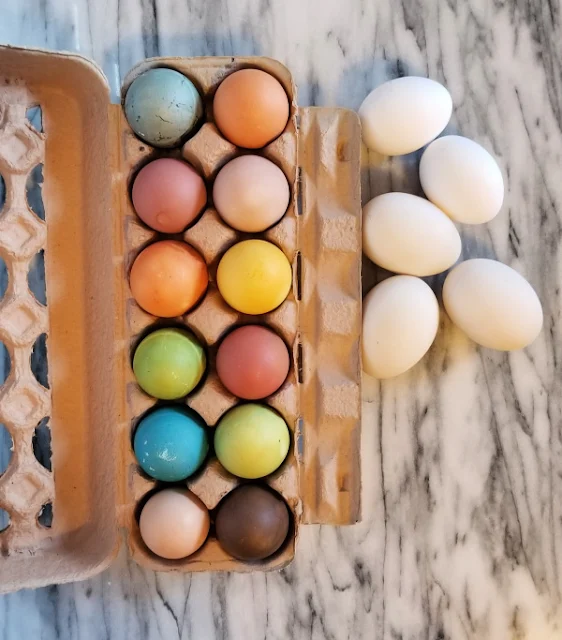6 Best Natural Plant Dyes for Easter Eggs
Dyeing eggs at Easter is a time-honored tradition in many cultures. You can make it even more natural and creative when you use veggies and spices from your kitchen and pantry to color the eggs.
There's no need to use commercial dyes or food coloring. It's healthier for your kids and chickens, and more economical to use plants - specifically vegetable peels and skins - especially if you grow your own veggies.
And if you think you can't get gorgeous, vibrant hues from natural ingredients - think again!
Use White Eggs for more Vibrant Colors
Although you can use light-brown eggs for this project, you will get brighter colors using white eggs. I love using our white duck and goose eggs to make extra-large Easter eggs!
Over the years I've tried lots of different plants and spices to dye eggs.
6 Best Natural Plant Dyes for Easter Eggs
Some definitely work better than others - for example spinach, cranberry juice, red wine, coffee and paprika yield less than stellar results - so I've pretty much narrowed it down to my six absolute favorite dyes for a basket full of truly beautiful eggs.
But it really is fun to experiment with all different kinds of vegetable trimmings and scraps.
What you Need for Natural Plant Dyes

What you Do | Pour the water in the saucepan, then add your dye ingredients (see chart below). Bring to a boil and then simmer for 10-20 minutes until your water changes to the color you want. Remove the pot from the heat, add the vinegar and let sit until cool.
The vinegar will allow the color to adhere better to the eggshell, so don't skip this step.
Meanwhile, carefully put three eggs into the mason jar. Strain the solids out of the dye, pouring the liquid over the eggs. Refrigerate overnight, then use a spoon to carefully remove each egg from the dye one at a time.
Or try removing some of the eggs after a few hours to get different shades/intensities of each color.
Set each egg into a separate section of an egg carton and allow to dry completely. Then gently wipe the surface of the eggs with a bit of oil for a subtle shine.
You can reuse each jar of dye for another batch of eggs. Just put three more eggs into the jar and pop them back into the refrigerator. It's fun to experiment taking the eggs out at various intervals for varying shades of color.

6 Best Natural Plant Dyes for Easter Eggs
- Chopped beets | bright pink
- Yellow onion skins | bright orange
- Turmeric | bright yellow
- Purple cabbage + turmeric | bright green
- Purple cabbage | bright blue
- Blueberries | purple
Please feel free to share the eggshells with your chickens - and they'll love the strained solids as well (except for the onion skins of course!) and I give my girls the vinegar water dyes when I'm finished too.






































